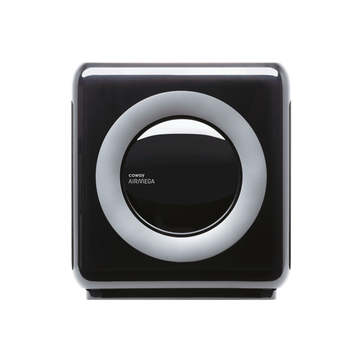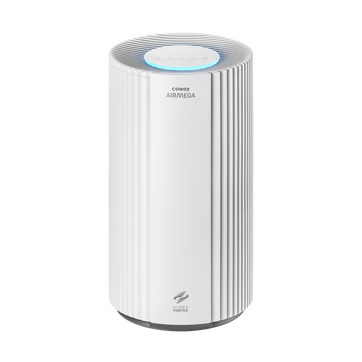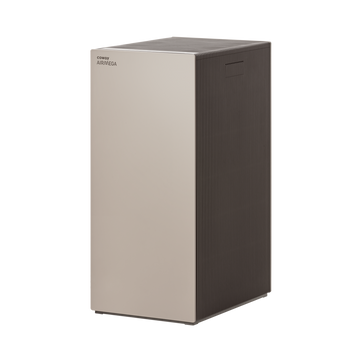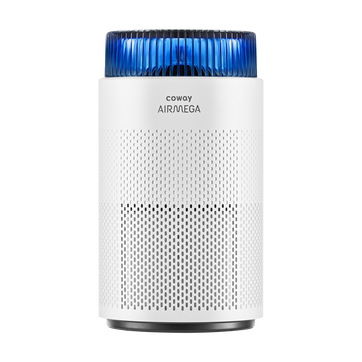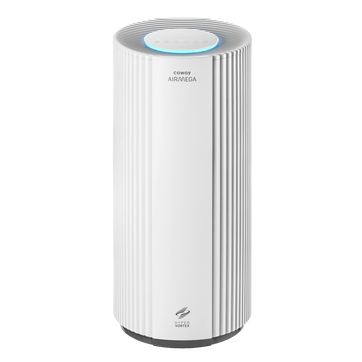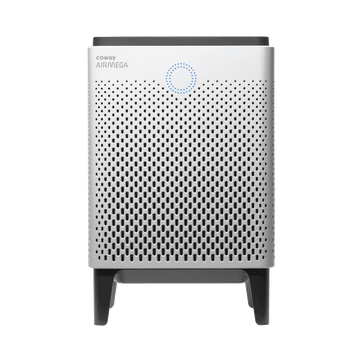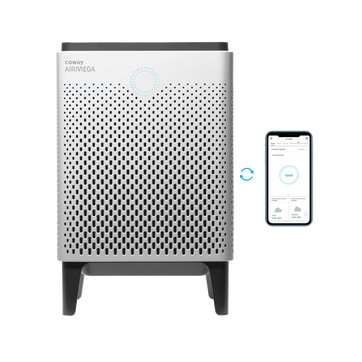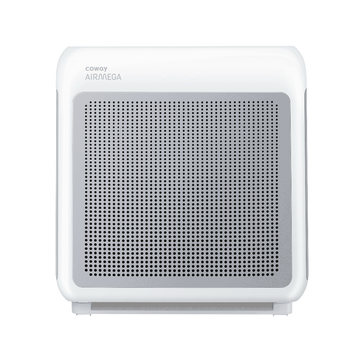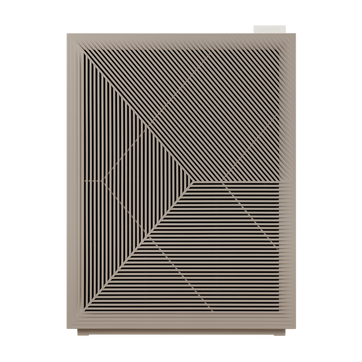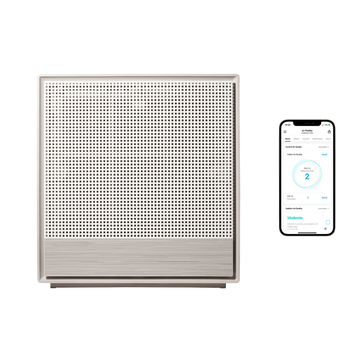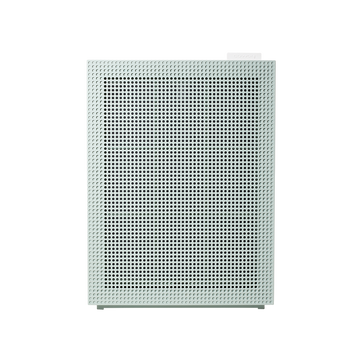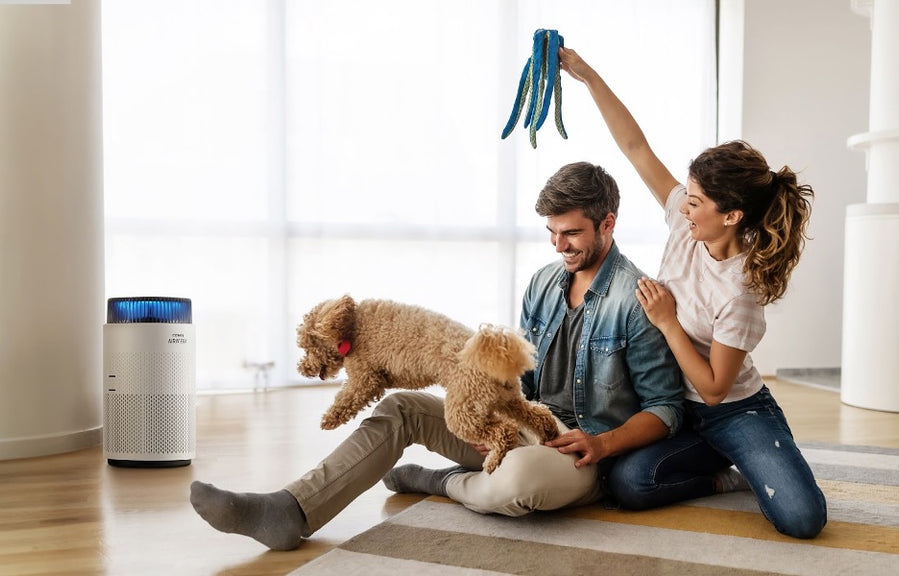
Are Air Purifiers Worth It? Why You Need One This Summer
As we head into another summer season, the importance of clean, healthy air in our homes and workspaces is more critical than ever. From wildfire smoke to pollen, dust, and other airborne pollutants, there are many threats to our indoor air quality that can have serious impacts on our health and well-being.
This begs the question: Are air purifiers really worth the investment? In this comprehensive blog post, we'll explore the benefits of air purifiers, how they work, and why having one in your home or office this summer is an absolute must.

What Are The Dangers of Poor Indoor Air Quality?
While we often think of outdoor air pollution as the primary threat to our health, the air quality inside our homes, offices, and other indoor spaces can actually be just as problematic - if not more so. The Environmental Protection Agency (EPA) has found that indoor air can be 2-5 times more polluted than outdoor air. This is especially concerning given that the average person spends around 90% of their time indoors.
Some of the most common indoor air pollutants include:
- Fine particulate matter (PM2.5): These tiny particles, which can come from a variety of sources like wildfire smoke, vehicle exhaust, and burning candles, have been linked to a range of health issues including heart disease, lung cancer, and asthma attacks.
- Pollen: Tree, grass, and weed pollen can trigger allergic reactions and exacerbate respiratory conditions like asthma, especially during peak seasons.
- Volatile organic compounds (VOCs): These chemicals, which are commonly found in things like cleaning products, furniture, and building materials, can cause eye, nose, and throat irritation, as well as more serious long-term health effects.
- Dust and pet dander: Dust mites and pet dander are major triggers for those with allergies and asthma.
- Mold: Excess moisture in the home can lead to mold growth, which has been associated with respiratory problems, immune system effects, and neurological symptoms.
Exposure to these indoor air pollutants has been shown to have a range of negative health consequences, from aggravating existing conditions like asthma to increasing the risk of developing new ones like heart disease. This is especially concerning for vulnerable populations like children, the elderly, and those with pre-existing respiratory or cardiovascular issues.

The Benefits of Using an Air Purifier In Summertime
Given the very real threats posed by poor indoor air quality, investing in a high-quality air purifier is an excellent way to protect your health and well-being.
Below are some of the key benefits of using an air purifier in your home or office this summer:
Improved respiratory health
Those with respiratory issues can experience greater difficulties breathing during the summertime for a variety of reasons, mainly because hot and humid weather can:
- Inflame airways
- Exacerbate disorders like COPD
- Lead to increased dehydration
- Contain more pollen
- Trigger asthma
One of the primary advantages of an air purifier is its ability to remove a wide range of airborne pollutants that can trigger or exacerbate respiratory problems during the summer. By filtering out fine particulate matter, pollen, and other allergens, air purifiers can help alleviate symptoms like coughing, wheezing, and shortness of breath for those with asthma or allergies. This is especially important during peak allergy seasons or periods of high outdoor air pollution, such as wildfire season.
Reduced risk of illness
In addition to improving respiratory health, air purifiers can also help reduce the spread of airborne illnesses. By capturing viruses, bacteria, and other microorganisms, air purifiers can create a cleaner, healthier indoor environment that is less conducive to the transmission of infectious diseases. This has become increasingly important in the wake of the COVID-19 pandemic, as many people are now more aware of the critical role that indoor air quality plays in preventing the spread of respiratory illnesses.
Improved sleep and productivity
In the summer, our melatonin secretion is shorter than in the winter, which often leads to us waking up earlier and sleeping less overall.
Exposure to poor indoor air quality can also lead to worsened sleep and productivity due to increasing fatigue, headaches, and difficulty concentrating. By using an air purifier to remove these pollutants, you can create a more comfortable and productive indoor environment. Many people report sleeping better and feeling more alert and focused after incorporating an air purifier into their home or office during the summertime.
Reduced allergen levels
Summer allergies are nothing to joke about. They typically begin in June and last until September, with symptoms ranging from congestion, sneezing, itchy eyes, and more.
For those who suffer from summer allergies, an air purifier can be a game-changer. By effectively removing pollen, pet dander, and other common allergens from the air, air purifiers can significantly reduce allergy symptoms and the need for medication. This can lead to improved quality of life and reduced healthcare costs associated with managing allergic reactions.
Fresher, cleaner air
Perhaps most importantly, air purifiers simply make the air in your home or office feel cleaner, fresher, and more enjoyable to breathe, which is particularly important during the summer wildfire season. By removing a wide range of pollutants, air purifiers can create a noticeably more pleasant indoor environment that is free from unpleasant odors, hazy air, and the irritating effects of airborne particles.
How Do Air Purifiers Work?
Air purifiers use a variety of filtration technologies to remove airborne pollutants from the indoor environment. The most common and effective types of air purifiers include:
HEPA Filters
HEPA (High-Efficiency Particulate Air) filters are the gold standard in air purification technology. These filters are designed to capture at least 99.97%2 of airborne particles 0.3 microns or larger in size, including fine particulate matter, pollen, dust, and pet dander, as well as 99.97%² of ultrafine particles like viruses, bacteria, fungi, and pollen, and includes an antimicrobial treatment to deactivate the spread of contaminants.
HEPA filters work by forcing air through a fine mesh screen that traps these microscopic particles, ensuring that only clean, filtered air is circulated back into the room.
Activated Carbon Filters
In addition to a HEPA filter, many air purifiers also incorporate an activated carbon filter. These filters are specifically designed to adsorb (capture and hold) volatile organic compounds (VOCs), odors, and other gaseous pollutants. Activated carbon is highly porous and has a large surface area, making it extremely effective at trapping these types of contaminants.
Air Purifier Sizing and Placement
To ensure maximum effectiveness, it's important to select an air purifier that is properly sized for the space you intend to use it in. Air purifiers are typically rated for a specific square footage, based on the unit's clean air delivery rate (CADR). As a general rule of thumb, you'll want an air purifier with a CADR rating that matches or exceeds the square footage of the room you plan to use it in.
In addition to selecting the right size air purifier, proper placement is also crucial. Air purifiers work best when placed in a central location in the room, away from walls and furniture that could obstruct airflow. Placing the unit near a doorway or window can also help maximize its effectiveness by drawing in more polluted air from the outside. Many air purifiers also feature smart sensors and automatic modes that adjust the fan speed based on real-time air quality monitoring, further optimizing performance.
Coway's Size-Specific Solutions
Coway offers a wide range of air purifiers to accommodate spaces of all sizes, from small bedrooms to large open-concept living areas. For example, our product lineup includes but isn’t limited to:
- Airmega ProX: Designed for spaces up to 4,253 sq. ft., the Airmega ProX is a powerful, commercial-grade air purifier that can handle even the largest indoor environments.
- Airmega 400/400S: Capable of purifying spaces up to 3,120 sq. ft., the Airmega 400 series is a popular choice for medium to large-sized rooms.
- Airmega 300/300S: Suitable for areas up to 2,512 sq. ft., the Airmega 300 series provides reliable air purification for open-concept homes and offices.
- Airmega 250/250S: Ideal for rooms up to 1,860 sq. ft., the Airmega 250 series delivers exceptional performance in a compact, stylish design.
- Airmega Mighty AP-1512HH/HHS: Designed for spaces up to 1,748 sq. ft., the Airmega Mighty series offers advanced filtration in a more affordable package.
Proper sizing and placement are crucial for maximizing an air purifier's effectiveness. We recommend positioning our units in a central location, away from walls and furniture, to ensure optimal airflow and coverage.

Choosing the Right Air Purifier for Your Needs
With so many different air purifier models and technologies on the market, it can be overwhelming to choose the right one for your needs.
Here are some key factors to consider when selecting an air purifier:
- Room size: As mentioned, make sure to choose an air purifier that is properly sized for the space you plan to use it in.
- Filtration technology - Look for air purifiers that incorporate both HEPA and activated carbon filtration, as this combination is the most effective at removing a wide range of pollutants.
- CADR ratings: Pay attention to the clean air delivery rate (CADR) for smoke, pollen, and dust, as these will indicate the purifier's performance in removing different types of airborne particles.
- Noise level: If you plan to use the air purifier in a bedroom or home office, look for models that operate quietly.
- Energy efficiency: Consider the air purifier's energy consumption and look for Energy Star-certified models to save on your utility bills.
- Smart features: Many modern air purifiers offer advanced features like air quality sensors, remote control, and Wi-Fi connectivity, which can make them more user-friendly and effective.
- Maintenance requirements: Factor in the cost and availability of replacement filters, as well as the ease of cleaning and maintaining the air purifier.
By taking the time to research and compare different air purifier models, you can find the one that best fits your needs, budget, and indoor air quality goals.
The Importance of Air Purifiers During Wildfire Season
One of the most pressing reasons to invest in an air purifier this summer is the increasing threat of wildfire smoke. As climate change continues to exacerbate wildfire activity across North America, the risk of exposure to hazardous particulate matter from these fires is higher than ever.
Wildfire smoke is composed of a complex mixture of fine particulate matter, gases, and chemicals that can have serious health consequences. Exposure to this pollution has been linked to a range of respiratory and cardiovascular problems, including increased risk of heart attacks, strokes, and asthma attacks. Children, the elderly, and those with pre-existing medical conditions are particularly vulnerable.
By using a high-quality air purifier equipped with HEPA and activated carbon filtration, you can effectively remove these harmful pollutants from the air in your home or office, providing a critical line of defense against the dangers of wildfire smoke. Air purifiers can also be particularly useful during power outages, when access to clean air may be limited.
In addition to using an air purifier, there are other steps you can take to protect yourself and your family during wildfire season, such as:
- Monitoring air quality reports and alerts in your area
- Keeping windows and doors closed to prevent smoke from entering your home
- Limiting outdoor activities when air quality is poor
- Considering the use of N95 or P100 masks when venturing outside
By taking a proactive approach and incorporating an air purifier into your indoor air quality strategy, you can help ensure that your home or workplace remains a safe, healthy haven, even during the most challenging environmental conditions.
Coway's Wildfire Response: Proven Protection
Coway's air purifiers have been rigorously tested and proven to be highly effective at removing the fine particulate matter and other pollutants found in wildfire smoke. In fact, independent testing has shown that Coway's Airmega 250 and Airmega 400 series air purifiers can remove over 99.98% of SARS-CoV-2 virus aerosols in just 2 minutes.
This exceptional performance, combined with Coway's advanced filtration technologies, makes our air purifiers an indispensable tool for protecting yourself and your family during wildfire season. Whether you're dealing with smoke from nearby blazes or the lingering effects of regional fires, a Coway air purifier can help ensure that the air you breathe indoors is clean, pure, and safe.
Coway's Commitment to Safe Indoor Air
When it comes to selecting the right air purifier, Coway's product lineup offers a solution for every need and budget. Our air purifiers are designed with the customer in mind, featuring a range of advanced technologies, user-friendly features, and sleek, modern aesthetics.
By choosing a Coway air purifier, you can rest assured that you are investing in a high-quality, reliable product that will deliver lasting benefits for your indoor air quality and overall health and well-being.
The Bottom Line: Why You Need an Air Purifier This Summer
In today's world, where indoor air quality poses a serious threat to our health and well-being, investing in a high-quality air purifier is more important than ever. From improving respiratory health and reducing the risk of illness to enhancing sleep and productivity, the benefits of using an air purifier are numerous and far-reaching.
This summer, as we contend with the ongoing challenges of wildfire smoke, pollen, and other airborne pollutants, having a Coway air purifier in your home or office can be a game-changer. By effectively removing a wide range of contaminants and providing a clean, healthy indoor environment, Coway air purifiers can help you and your family or employees breathe easier and enjoy a higher quality of life.
Don't wait until it's too late—invest in a Coway air purifier today and enjoy the peace of mind that comes with knowing your indoor air is clean, pure, and safe. Your health and well-being are worth it.
Sources:
ATSDR - Possible Sources of Indoor Air Pollution
Healthline - Long Summer Days Affecting Your Sleep? How to Get the Rest You Need
Zyrtec - Understanding Summer Allergies: Causes, Symptoms & Management Tips
WRI - The Latest Data Confirms: Forest Fires Are Getting Worse.
Disclaimers
1Coway air purifiers have been proven to trap dust, pollen, dander, viruses and bacteria in the air based on KCL (Korea Conformity Laboratories) testing.They have been tested in a 30㎥ size chamber according to the Korea Air Cleaning Association standard (SPS-KACA 002-132:2022 Modified) to measure the 0.01㎛ size of particle removal rate. It was tested on maximum airflow speed in normal room temperature and humidity conditions. The performance may vary in the actual living environment of customers.
→ Tested with Airmega Aim, 50, 100, 150, 160, Tower AP-1216L, Mighty AP-1512HH, MightyS AP-1512HHS, 200M, Icon, IconS, 230, 240, 250, 250 Art, 250S, 300, 300S, 350, 400, 400S, 450, ProX
299.97% of viruses, bacteria, fungi and pollen were verified to be removed from the air for Coway air purifiers which have Green True HEPA™ filter applied based on the Japan Food Research Laboratories(JFRL) testing according to JEM 1467 standard.
→ Tested with Coway Airmega Mighty AP-1512HH, MightyS AP-1512HHS, 250, 250 Art, 250S, 300, 300S, 400, 400S
→ All tested by JFRL and received above result within below time.
4The concentration of ammonia, acetaldehyde and acetic acid were proven to be removed within 30 minutes by FCG Research Institute, Inc. Human Life Science Lab. It is not a demonstration result in the actual use space. Not all odors and gases may be supported. → Tested with Coway Airmega 150, 160, Mighty AP-1512HH, MightyS AP-1512HHS, 400, 400S
5The coverage area of the air purifier is based on an area where the air cleaner can make two air changes per hour (ACPH). An air change per hour translates to how many times an air purifier can clean an area, assuming the height of a ceiling to be 8 ft, in one hour. Therefore ** means two air changes per hour means that the cleaner can clean the area once every 30 minutes and * means air changes per hour means that the air purifier can clean the area once every 60 minutes.
10Terms and conditions apply. Discounts, including promotions, coupons, bundle discount and subscription discount, cannot be stacked on top of other coupons. During promotional periods, discount codes will not be able to be applied to orders. Promo codes may apply to products only—filters, accessories, and new products within 3 months of the release date are not included.
11Based on Coway R&D internal laboratory testing, activated carbon filtration was shown to remove up to 95% of ammonia odors within 40 minutes, and up to 99% of fecal odors within 20 minutes. Actual performance may vary depending on usage conditions.

